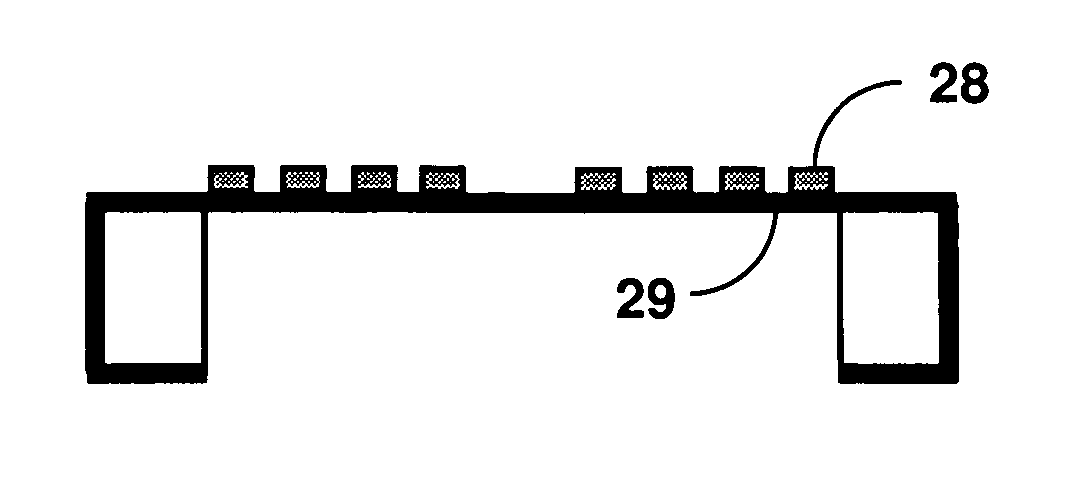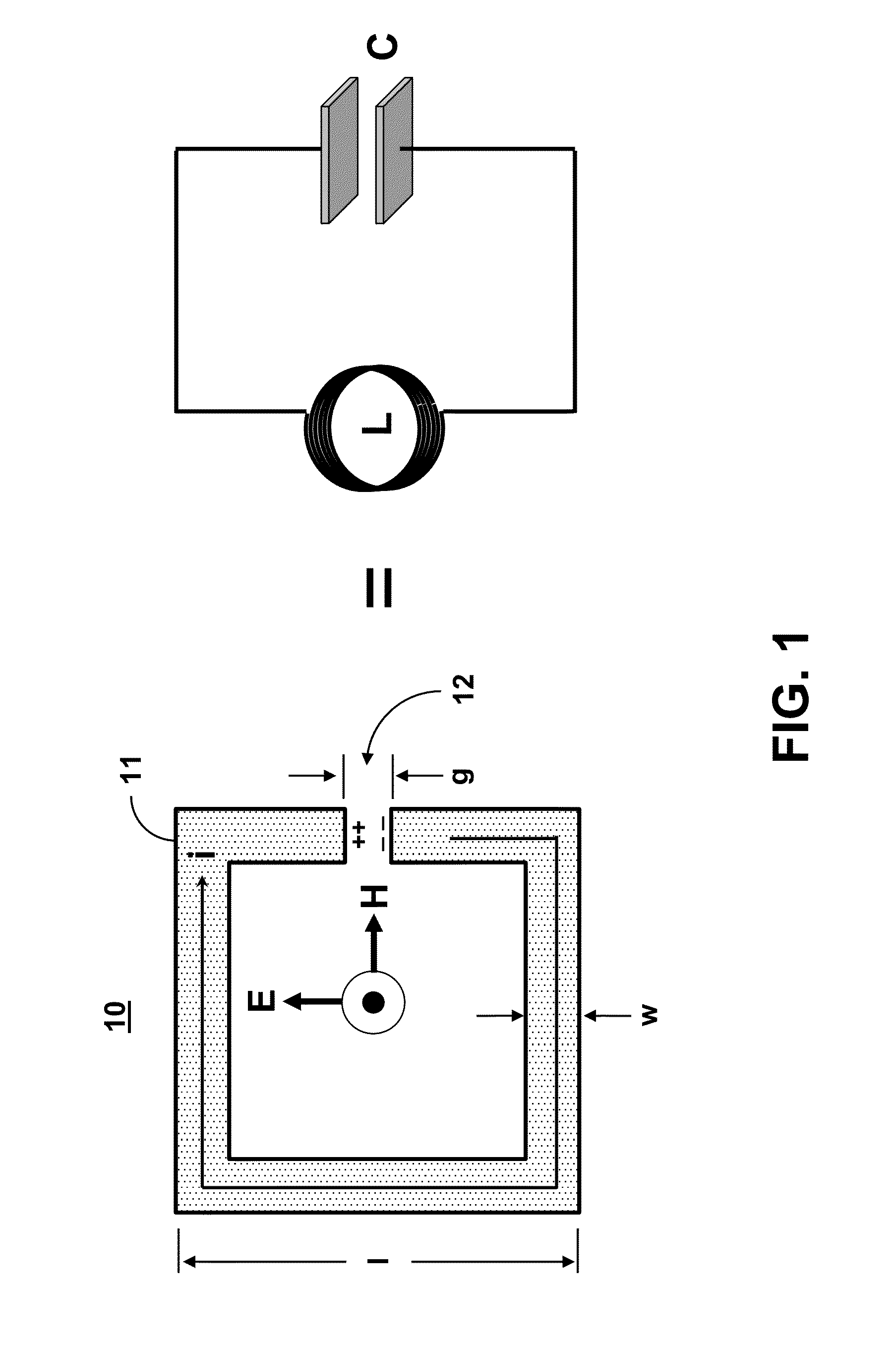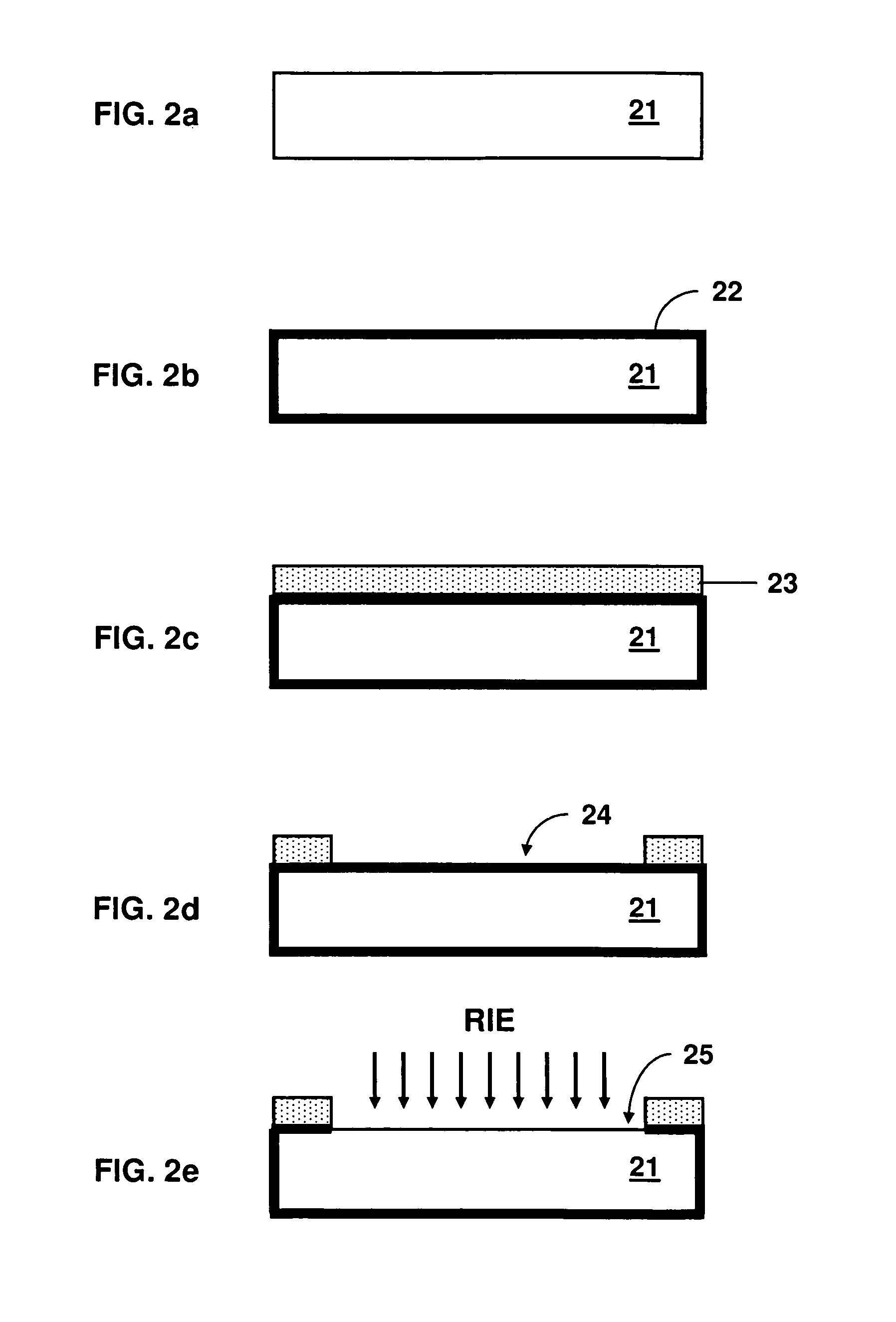Terahertz metamaterials
a metamaterial and terahertz technology, applied in the field of terahertz radiation technology, can solve the problems of insufficient development of terahertz technology to meet the requirements of many potential applications, metamaterials with electromagnetic properties that are difficult or impossible to achieve with conventional right-handed materials, and existing materials with negative magnetic permeability typically lose their magnetic activity at much lower frequencies
- Summary
- Abstract
- Description
- Claims
- Application Information
AI Technical Summary
Benefits of technology
Problems solved by technology
Method used
Image
Examples
Embodiment Construction
[0022]The present invention is directed toward terahertz metamaterials comprising a periodic array of resonator elements on a dielectric substrate. The dielectric substrate can comprise a thin dielectric membrane. Therefore, the present invention is further directed toward a method to fabricate such terahertz metamaterials on a thin membrane. Fabrication of such metamaterials on a membrane enables the fabrication of three-dimensional terahertz metamaterials.
Fabrication of Planar Metamaterials on Thin Membranes
[0023]As schematically illustrated in FIG. 2, a method of the present invention is directed toward the fabrication of metamaterials on thin membranes. As an example of the fabrication method, the THz metamaterials can be fabricated on large area, free-standing thin silicon nitride (Si3N4) membranes as further described below. Fabricating metamaterials on thin membranes reduces any dielectric losses due to the substrate and enables the implementation of various planar stacking s...
PUM
| Property | Measurement | Unit |
|---|---|---|
| thickness | aaaaa | aaaaa |
| frequency | aaaaa | aaaaa |
| temperatures | aaaaa | aaaaa |
Abstract
Description
Claims
Application Information
 Login to View More
Login to View More - R&D
- Intellectual Property
- Life Sciences
- Materials
- Tech Scout
- Unparalleled Data Quality
- Higher Quality Content
- 60% Fewer Hallucinations
Browse by: Latest US Patents, China's latest patents, Technical Efficacy Thesaurus, Application Domain, Technology Topic, Popular Technical Reports.
© 2025 PatSnap. All rights reserved.Legal|Privacy policy|Modern Slavery Act Transparency Statement|Sitemap|About US| Contact US: help@patsnap.com



